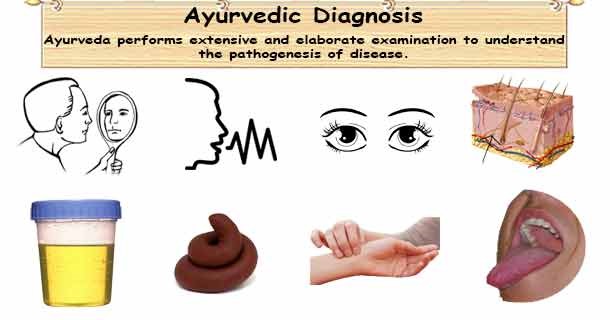Hi *|FNAME|*! How are you? How is the diagnosis made in Āyurveda?Āyurveda is a Darshana, which means observation. Darshana is the first step towards a good diagnosis. According to Susruta, before prescribing any therapeutic procedure, the physician should examine the patient’s lifespan and whether he has any residual lifespan, and then his Vyadhi (disease), Ritu (season), Agni (digestive power), Vaya (age), Deha (body build), Bala (strength), Sattva (mind), Satmya (conducive factors), Prakriti (constitution), Bhesaja (drug), and Desa (habitat). DARSHANA: DEEP OBSERVATION.In the face-to-face session, this stage begins as the patient walks towards the consultation room, where it is possible to assess gait, physique, and appearance. If it’s online, prior checking pictures of the body, face, nails, and tongue is a great way to help the pareeksha. Dr. Vasant Lad, one of the first Vaidyas to come to the West, explains that the face is the mirror of the mind, and the eyes are the window to the soul. Mirror of the mind because Mano Vaha Srotas, which has its root in the cardiac plexus and permeates the entire body, flows into the sense organs and marmic points. It means that a good Ayurveda doctor understands how the mind works and which part of the body is sick just by looking at the patient’s face. Furthermore, Dr.Lad teaches that the face covers all connections with the brain, as each sense organ connects to a specific part of it. For example, the eyes connect to the occipital area, where the interpretation of visual perception takes place. Therefore, a detailed examination of the face and head can be a relevant tool in diagnosis. It’s so important that there are specific analyses for the ears, iris of the eyes, head, and tongue. SPARSHANA: TOUCH, PERCUSSION, AND AUSCULTATION.The second step involves evaluating additional factors, such as body temperature, skin swelling margins, and organ enlargements. Clinical techniques, including palpation, percussion, and auscultation, can be utilized during the consultation. In face-to-face, it is common to read and observe the pulse, tongue, teeth, hair, and eyes to confirm the stage and duration of the disease, if it exists. Also, using the tools of modern medicine, such as laboratory tests, can help confirm the prognosis. PRASHANA: QUESTIONING BY ASKING QUESTIONS.Finally, it’s essential to investigate questions about several aspects of the patient’s health. It includes their age, place of residence, family relationships, and understanding of their physical and mental strength. Additionally, it’s relevant to inquire about their digestive capacity, the season of the year, their general habits, diet, medication intake, and medical history. Verifying these details can help healthcare professionals better understand the patient’s health and provide appropriate treatment. When Dr. J.R. Raju was once asked if he was using medical skills or intuition during the diagnosis, he replied: “Intuition is simply the extension of logic,” which means what appears to be intuitive is merely the joint analysis of a series of coherent signs, symptoms, and impressions. Thus, to make a correct diagnosis, Vaidyas or Ayurvedic practitioners must possess the skills of excellent detectives. #ayurveda #yoga #health #dinacaryā #Ṛtucaryā #diagnosis #pariksha | 








